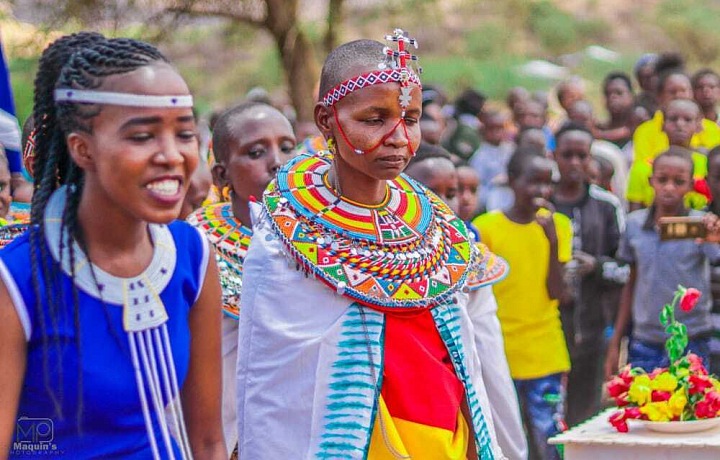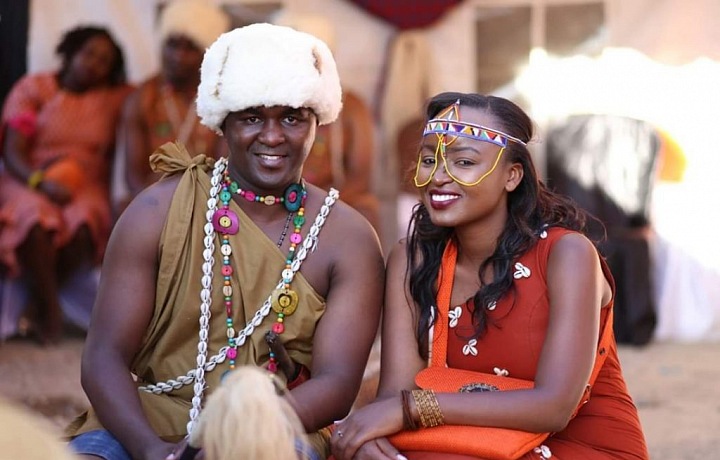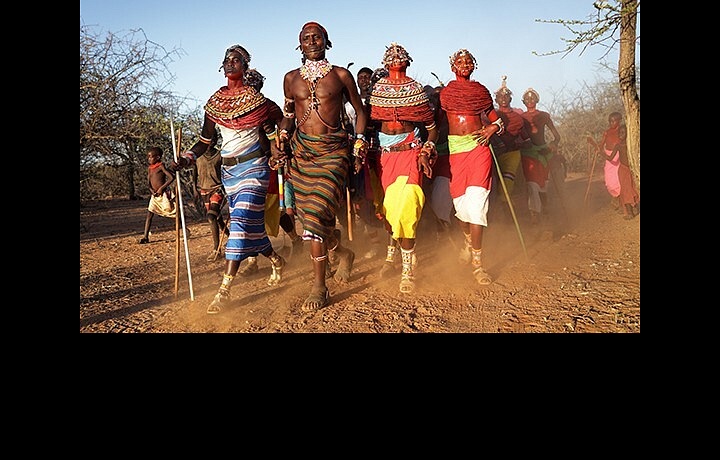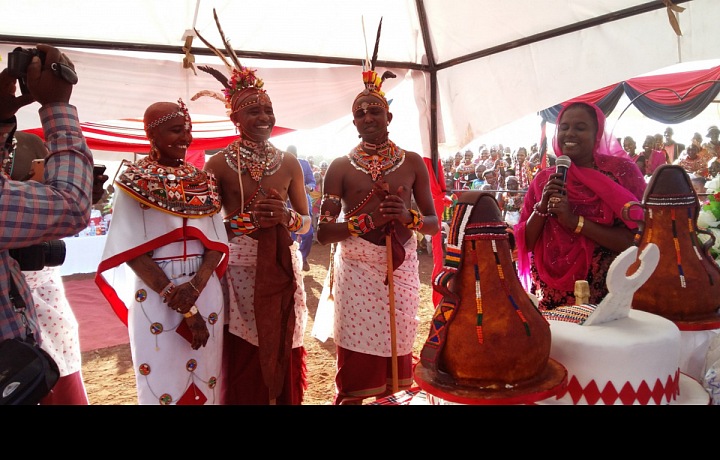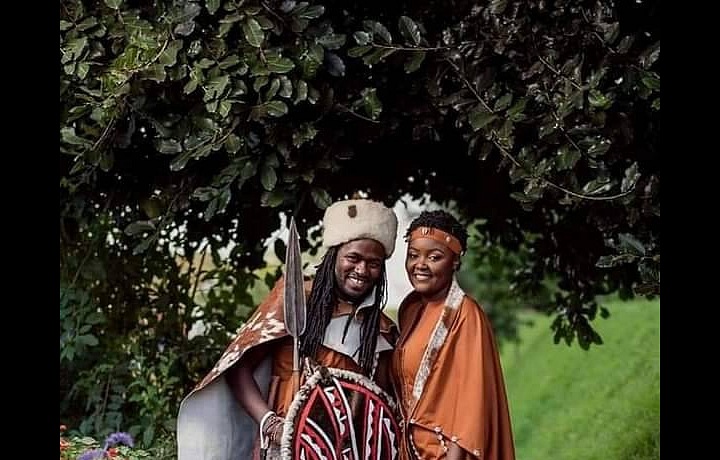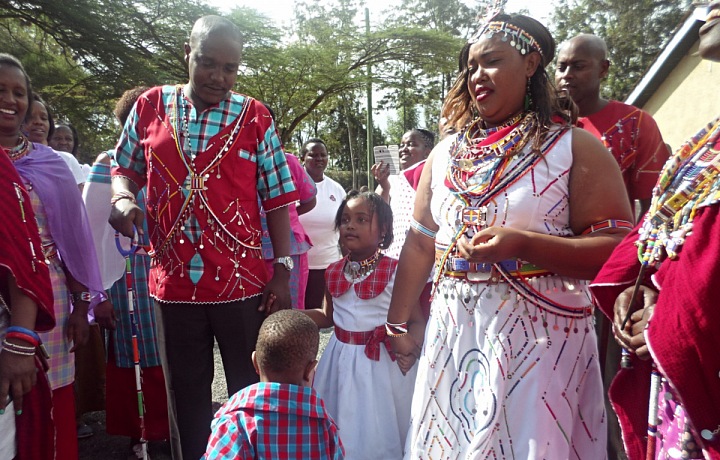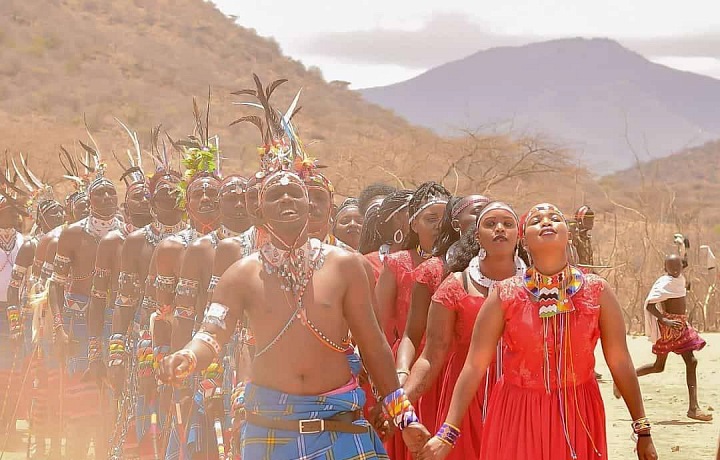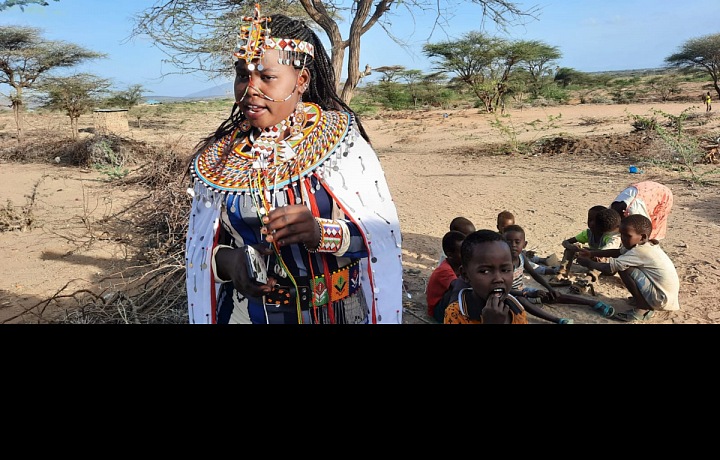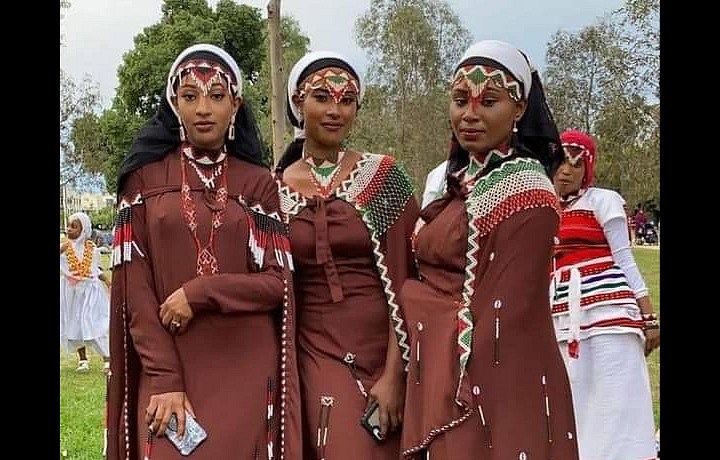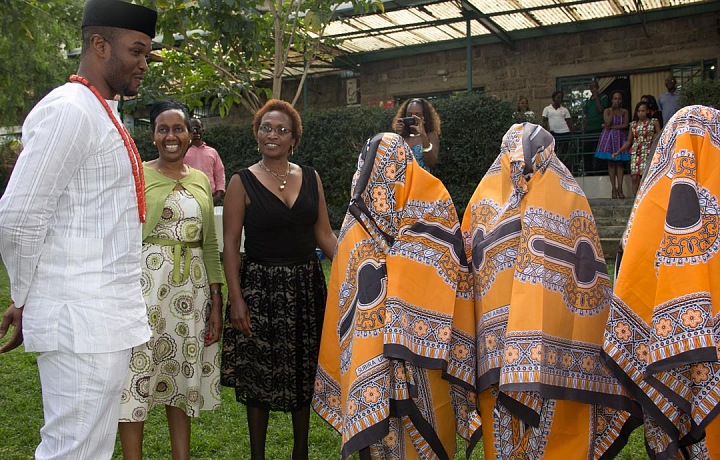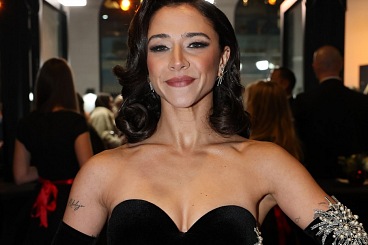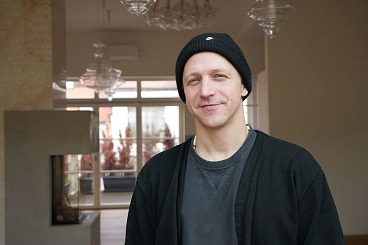Beriem si Keňana: Masajský otec pľuje nevestám na hlavu a prsia. Zniesť musia i prepichnuté uši, tetovania či oholenú hlavu
Hlavná sezóna pre svadby v Keni je od augusta do decembra. Dôvody sú tie, že väčšina Keňanov pracuje nepretržite od januára do augusta, a preto si v poslednom štvrťroku berie dovolenku v duchu prázdnin. Školské prázdniny v decembri sú na konci roka tiež o niečo dlhšie, čo väčšine rodín umožňuje robiť si plány, či už ide o svadby, rodinné stretnutia alebo prázdninové výlety.
Páry majú v Keni slobodu uzatvárať rôzne druhy manželstiev; v krajine je však oficiálne uznaných len päť manželstiev. Aby boli manželia v Keni právne uznaní za manželský pár, musia uzavrieť občianske, hinduistické, kresťanské, islamské alebo obvyklé manželstvo. Hoci sa tieto rôzne typy manželstiev uzatvárajú jedinečnými spôsobmi podľa zvykov a tradícií partnerov, všetky sú uznávané a chránené zákonmi danej krajiny. Dohodnuté manželstvá sú súčasťou kenskej kultúry, najmä v niektorých komunitách, kde sa považujú za tradičnú prax. V takýchto prípadoch môžu byť rodičia alebo príbuzní budúcich manželov zapojení do procesu výberu partnera na základe rôznych faktorov, ako je rodinné zázemie, vzdelanie, náboženstvo a finančný stav. Ako sa však Keňa modernizuje, dohodnuté manželstvá sú čoraz menej bežné.
V Keni sa svadba považuje za obrad prechodu, ktorý by mal podstúpiť dospelý. Zahŕňa výmenu sľubov, výmenu prsteňov, zaplatenie vena (toto môžu urobiť aj páry, ktoré sa chcú dostať do manželského vzťahu bez toho, aby nevyhnutne robili svadobnú časť) a krv (ženích si poreže ruku a nevesta mu saje krv a naopak). Ale o tom neskôr...Porozprávam vám, ako je to s tradíciami v Keni.
Viac stretnutí, kým nájde nevesta toho pravého
Od niektorých praktík sa upustilo a iné sú znovu prijaté, aby vzdali hold tradícii. Každý z nich prešiel kenskou históriou. Vo väčšine prípadov sa pred svadbou uskutočnia dve až tri stretnutia medzi rodinami – bez ohľadu na to, z akého kmeňa obaja sú. Táto udalosť, v niektorých komunitách známa ako „ruracio“, zahŕňa výmenu darov, vyjednávanie o vene a požehnanie zväzku rodinami.
Celý tento rituál zoznamovania má tradične početné stretnutia, pričom prvé sa podobá na tajnú operáciu. Rodičia muža a niekedy aj strýko navštívia rodičov jeho lásky, aby prejavili jeho záujem. Ak si rodičia svojho budúceho zaťa obľúbili, dostane zelenú. Inak sa jeho rodina musí potichu vytratiť. Ale to je len prvá prekážka; počas druhého stretnutia teraz musí požiadať o ich požehnanie. Ak všetko pôjde dobre, je naplánované tretie stretnutie. Povedala by som, že tradičné. Teraz musí poskytnúť dve kozy a jedného kozla, ktoré sú okamžite zabité, aby požehnali zväzku. Až potom sa dohaduje cena za nevestu – ktorá sa bude platiť dlhodobo. Keď sa to vyrieši, ženích musí zhromaždiť rodinu do domu svojej nevesty, aby navaril pre celú jej rodinu – na znak toho, že sa bude vedieť postarať o svoju manželku. Ale žiadne stresy, dnes sa najíma vo väčšine prípadov kuchár.
Ženíchovi často nie je dovolené hovoriť na žiadnom z týchto stretnutí, pričom väčšinu rozprávania má na starosti jeho otec a strýkovia. Nevesta zostáva skrytá, kým ju nezavolajú starší, aby potvrdili, že ženích je „ten pravý“. Ale kvôli nákladom na tieto sviatky väčšina rodičov teraz dáva prednosť zlúčeniu všetkých týchto rôznych návštev do jednej.
Samozrejme, medzi kmeňmi existujú rozdiely s týmito stretnutiami, väčšina z nich to však v tej či onej forme zahŕňa.
Tu sú niektoré ďalšie svadobné tradície z rôznych kmeňov:
Kmeň Rendille
Pre mužov, ktorí sú súčasťou kmeňa Rendille, je ponuka na sobáš viac než len jednoduchá otázka. Muž musí poslať korálky žene, s ktorou sa chce oženiť, a ak ich prijme, zasnúbia sa.
Tesne predtým, ako sa dvojica zosobáši, si žena musí nechať prepichnúť uši a na telo si dať urobiť rôzne symbolické tetovania. Muž, na druhej strane, musí poskytnúť rodine svojej budúcej manželky ťavy.
Kmeň Rendille je jedným z najbohatších, medzi ktorými som mala možnosť žiť. Táto komunita, hovorovo známa ako „držitelia Božej palice“, existuje ako nomádska pastierska etnická skupina hovoriaca kušitsky, ktorá žije vo vyprahnutej severovýchodnej provincii Kene. Ľudia Rendille udržiavajú mimoriadne tradičný pastiersky životný štýl a naďalej sa starajú o ťavy, ovce, kozy a dobytok, ktoré zdieľajú pustý priestor. Cítila som, ako sa môj životný štýl obmedzuje na to najnutnejšie. Bolo to osviežujúce, očistné, revitalizujúce. Aj keď Rendille žijú v harmónii so zvieratami, videla som jasnú štruktúru spôsobu, akým hospodária so svojím dobytkom. Ťavy sú vyhradené pre severnú časť ich územia, pričom dobytok je pridelený do južnej oblasti. Aj v takomto divokom prostredí vládne poriadok..
Kmeň Kikuyu
Tradičná svadba v Kikuyu sa nazýva „ngurario“. V deň svadby ženích, jeho rodičia a ďalší prichádzajú do domu nevesty. Do domu ale vstupovať nesmú. Vykonáva sa tradícia nazývaná „kuhura hoti“. Ženy zo ženíchovho sprievodu začínajú spievať. Nosia rôzne darčeky. Ženy v dome tiež spievajú. Po chvíli sa dvere konečne otvoria. V niektorých komunitách sa za otvorenie dverí musí zaplatiť dodatočná suma.
Nasleduje druh hry, kde ženích musí spoznať svoju nevestu medzi skupinou žien oblečených v rovnakých šatách. Táto tradícia je známa ako „gucagura muka wake“. Ak urobí chybu, musí zaplatiť nejaké peniaze.
Po nájdení nevesty musí ženích rituálne nakrájať kozie mäso pripravené na túto príležitosť. Potom sa o mäso podelí s niektorým členom svojej a nevestinej rodiny. Ženích musí tiež odpovedať na pár otázok, ktoré položil zástupca nevestinej rodiny. Podľa tradície zvanej „kuria matu“ dáva ženích neveste kozie uši. Ona ich zje. Potom mu dá kozie uši. Tento akt by im mal pripomenúť, že by sa mali vždy navzájom počúvať. Prítomné slobodné ženy jedia aj kozie uši.
Aj nevesta má počas svadobného dňa nejaké povinnosti. Česať ženíchovi vlasy. Tiež mu leští topánky. Ostrihá mu nechty. Ponúkne mu aj trochu kaše ("gukundania ucuru"). Tradične to najskôr odmieta. Ale keď dostane darček, zmení názor.
Pár dostane sobášny list. Existuje tradícia, podľa ktorej sa certifikát číta na verejnosti.
Kmeň Samburu
Keď muž zo Samburu stretne dievča, ktoré sa mu páči, iniciuje kultúrny proces, ktorý môže niekedy trvať mesiace, keď prebiehajú rokovania o cene nevesty. Nastávajúca nevesta si možno ani neuvedomuje, že o ňu má muž záujem, kým sa v jej usadlosti neobjaví jeho rodina s časťou vena. V Samburu majú ženy len veľmi malý vplyv na to, koho si vezmú. Rozhodnutie dievčaťa nie je zohľadnené v celom procese. Žiadne zoznamovanie. Žiadne dvorenie. Niekedy muž žije so ženou a plodí s ňou deti predtým, ako sa rozhodne oženiť sa s ňou. Niekedy sa stáva, že roky pred svadbou mladého dievčaťa zo Samburu zbiera od členov rodiny a obdivovateľov korálkové náhrdelníky a s hrdosťou ich nosí. Keď dovŕši tínedžerské roky, vydá sa za bojovníka, ktorého si jej rodina vyberie, za muža, ktorý zabezpečí silnú rodinnú líniu a ktorého stáda prispejú k bohatstvu rodiny.
Ak má muž po rozhovoroch o dievča záujem, začne plánovať, ako zaplatiť cenu za nevestu. To sa líši v závislosti od finančnej stability rodiny. Samburu svadby sa konajú skoro ráno pred východom slnka. Ženícha do domu dievčaťa odprevadí skupina tancujúcich žien. Ženích zaplatí veno pred svadbou. Veno mohlo predstavovať štyri až deväť kôz alebo kráv, v závislosti od finančnej stability mužovej rodiny. Zvieratá sú rozdelené medzi nevestinu rodinu. Vo svadobný deň, ženích v sprievode niekoľkých svojich priateľov, ozdobených tradičnými ozdobami, vezme tri kozy k svokrovcom a jednu (Rikoret ) zabije pri dverách, na znak toho, že teraz vlastní manželku.
Ak dievča, ktoré si chcete vziať, neporodilo, potom by ste mali zabiť býka, ale ak už má deti, zabijete kozieho samca. Ženícha prijme rodina dievčaťa, ktorá mu vezme topánky, aby v prípade studených nôh nemohol utiecť, pretože si ho ľudia cestou všimnú.
Svokra oholí ženíchovi vlasy a podá mu meč a tradičný odev, ktorý musí nosiť počas trvania svadby. Toto je znamenie, že sa musí postarať o svoju manželku.
Krv zo zabitého býka alebo kozy sa zmieša s mliekom a celý deň sa uchováva pod tradičnou posteľou. Nevesta a ženích trávia deň u mužovej svokry a dostávajú od starších rady ohľadom manželstva. Na druhý deň tradičnej svadby v Samburu odchádza nevesta so svojím manželom do svojho manželského domu.
Ďalší rituál sa vykonáva mimo domu matky dievčaťa. Nevesta a ženích spolu opúšťajú jej dom a nemajú sa obzerať späť. Samburuovia veria, že ak sa človek pozrie za seba, premení sa na soľ. Je to spôsob, ako povedať dievčaťu, aby sa nikdy nevrátilo a postavilo dom svojej matky. Nevesta dostane tradičnú tekvicu s mliekom, znak, že bude mať dosť jedla, a ďalšiu malú tekvicu naplnenú kozím tukom, ktorý symbolizuje plodnosť. Manželia si na znak požehnania nalievajú mlieko a mastia sa navzájom. V Samburu nie je rozvod. Ak muž zle zaobchádza so svojou ženou, môže ho prekliať ako matka.
V tradícii Samburu je mladá žena pripravená vydať sa približne vo veku 12 rokov. Červený náhrdelník znamená, že jej otec vybral manžela. Pred manželstvom sa podporujú sexuálne vzťahy, ale nie pôrod. Ak otehotnie pred manželstvom, bude musieť potratiť. Na každého priateľa, ktorého mala pred svadbou, sa bude musieť zabudnúť, pretože odíde žiť do domu a dediny svojho nového manžela, ktorého nikdy predtým nestretla. Na svadbe som bola ako hosť a videla som tak muža, ktorý bol vlastne šťastný ženích. Povedal mi, že sa teší na jedlo, ktoré pripraví jeho nová manželka v noc ich svadby. Keď som sa ho spýtala, či je dobrá kuchárka, povedal, že nevie, pretože ju nikdy predtým nestretol.
Masajský kmeň
Nevesty, ktoré sú súčasťou kmeňa Masajov, si pri príprave na svadbu oholia hlavy. Potom si na pokožku hlavy aplikujú jahňací tuk a olej.
Jednou zo svadobných tradícií kmeňa Masajov, ktorí žijú v Keni a Tanzánii vo východnej Afrike, je pľuvanie dcéry na hlavu a prsia predtým, ako odíde z domu svojho otca do domu svojho nového manžela. Všetko sa to začína, keď starší z kmeňa hľadajú ženícha pre slobodné nevydaté dievčatá alebo ženy. Bez toho, aby sa jej opýtali, zorganizovali svadobný obrad. Ani jej mama nevie, čo sa deje. Po zaplatení vena rodine nevesty je matke darovaný býk. To znamená odchod jedného z jej dievčat do nového domova.
Niekde členovia rodiny ženícha urážajú pár pri odchode, aby odohnali zlých duchov a nešťastie.
Kmeň Pokot
Ženích v kmeni Pokot musí zaplatiť cenu za nevestu. Svojim nevestám musia vybaviť aj koženú obrúčku, ktorú jej pri svadobnom obrade dajú na zápästie.
V tomto kmeni sú často mladé ženy odvlečené z dediny pre veno 20 kôz a troch tiav. Väčšina žien nebude mať ani potuchy o uzavretí dohody, keďže strávia mesiac v izolácii ako súčasť rituálu. Jedna rodina povedala, že zámerne zatajili dohodnuté manželstvo svojej dcére zo strachu, že by utiekla, keby sa to dozvedela. O tomto kmeni je známe, že praktizuje mrzačenie ženských pohlavných orgánov.
V galérii ti prinášame fotografiu takéhoto dievčaťa. Toto je srdcervúci moment, keď sú mladé dievčatá v Keni predávané do dohodnutých manželstiev za veno dobytka ako súčasť tradičného obradu, ktorý označuje ich prechod do ženstva. Niektoré ženy, oblečené v kmeňových šperkoch a s vlasmi zviazanými do vrkočov, možno vidieť, ako sa trápia, keď ich odvliekli a ich otcovia vymenili za 20 kôz, tri ťavy a desať kráv. Mnohé z dievčat, ktoré sú členkami kmeňa Pokot, si neuvedomujú, že boli vyjednané, kým ich manželia neprídu vyzdvihnúť po tom, čo strávili mesiac v izolácii pred obradom. Dobytok sa vypláca rodine dievčaťa v priebehu niekoľkých týždňov, pričom posledné prinesú v deň rituálu, keď si muži vyzdvihnú aj nevesty. Mnohé z dievčat majú 14 rokov, a to aj napriek tomu, že kenský zákon teraz zakazuje sobáše v detstve. Rovnako ako pri mnohých kmeňových zvykoch sa však prísne dodržiavanie tradícií považuje za dôležitejšie ako dodržiavanie zákonov.
Pokotovia vyvinuli svoju sociálnu štruktúru a praktiky, aby maximalizovali svoje šance na prežitie každej domácnosti v často zložitom a nepriateľskom prostredí, no v súčasnej Keni sa na nich hľadí ako na barbarských a neprijateľných. Počas ceremónie budú dievčatá spievať a zostanú stáť od popoludnia cez celú noc a potom ráno. Na konci obradu dievčatá a chlapci z komunity spolu tancujú pod dohľadom starších. O ľuďoch Pokot je tiež známe, že praktizujú mrzačenie ženských pohlavných orgánov, čo je prax, pri ktorej sa časti ženských pohlavných orgánov odstraňujú pomocou nožníc, žiletky alebo skla predtým, ako sú zašité a nohy sú zviazané, kým sa rany nezahoja.
Táto tradícia sa uskutočňuje v oveľa mladšom veku ako nútené sobáše, vo viere pomôže udržať dievčatá čisté, kým nepríde čas, aby podstúpili obrad, počas ktorého sa z nich stanú ženy. Keďže však obrady zvyčajne vykonávajú nekvalifikovaní šarlatánski lekári, ktorí pôsobia na míle od akejkoľvek nemocnice a bez anestetík alebo antibiotík, úmrtia sú bežné v dôsledku straty krvi alebo infekcie. Ak dievčatá nezomrú, potom im stehy môžu spôsobiť strašnú bolesť a nepohodlie po celý život, najmä počas pôrodu. Podobne ako v prípade detských manželstiev, aj v Keni je táto prax zakázaná s maximálnym trestom doživotia vo väzení v prípade, že dievča zomrie, ale zatiaľ nedošlo k žiadnemu úspešnému stíhaniu.
Kmeň Kamba
Podľa zvykov Kamby musí muž počas svadby Kamba prejaviť úctu rodine nevesty tým, že najprv uzná, že ich dievča bolo dobre vychované, a preto má veľkú hodnotu. Prostredníctvom ústneho potvrdenia zvyky Kamba umožňujú vyplatiť veno rodine nevesty. Veno ukazuje, akú hodnotu prikladá ženích neveste. Je najmä vo forme kráv a kôz. Počet týchto zvierat zahnaných do usadlosti nevesty používa rodina nevesty na meranie toho, ako sa má ženích dobre, a na meranie toho, ako dobre sa pravdepodobne postará o ich dcéru. Hodnota nevesty sa zvyšuje podľa toho, aká je krásna, pracovitá či podnikavá. Najdrahšie platby vena však dostali dievčatá, ktoré prešli formálnym vzdelaním.
V niektorých rodinách kmeňa Kamba sa od nových párov žiada, aby natiahli ruky. Otec ženícha si potom vloží do úst alkohol alebo vodu a napľuje im to na ruky, aby dal najavo, že ich obdaril bohatstvom.
Kmeň Taita
Predkovia môžu mať význam v niektorých kenských svadobných tradíciách, najmä pre kmeň Taita. V kmeni Taita sa alkohol pred pitím naleje na zem. Verí sa, že je to spôsob, ako slúžiť predkom, ktorí sú už dávno preč. Poznamenáva tiež, že niekedy sa páry navzájom kŕmia kúskom mäsa namiesto kúska svadobnej torty.
Tradičné kenské oblečenie pre svadobných hostí
Kenské nevesty sa počas svadby často zdobia tradičným odevom a šperkami. Patria sem farebné odevy vyrobené z miestnych látok, ako napríklad „kanga“ alebo „kitenge“ so zábalom hlavy a šperkami. Nosia hlavne náhrdelníky, náramky a náušnice, často vyrobené z korálikov alebo drahých kovov, ktoré majú kultúrny význam a verí sa, že páru prinášajú šťastie a požehnanie. Farby sa môžu líšiť, ale čiernej sa väčšinou vyhýbajú, pretože sa predpokladá, že priťahuje zlé znamenia.
Hostia, ktorí sa zúčastňujú na kenských svadbách, musia tiež dodržiavať tradičné pravidlá obliekania; muži nosia košele v kombinácii s nohavicami, zatiaľ čo ženy si vyberajú šaty, ktoré im siahajú pod kolená, doplnené šálmi, ak je to potrebné z dôvodu náboženského presvedčenia alebo kultúrnych praktík.
Farebné látky, ako sú tie, ktoré vidíte na svadobnom oblečení, sú odporúčané, ale nie povinné, pretože hostia nemusia v porovnaní s párom príliš vyčnievať. Ženíchovia sú zvyčajne oblečení v kanzu alebo oblekoch spolu s kofiou klobúkom. Kanzu sú dlhé biele tuniky, ktoré sa nosia cez nohavice, zatiaľ čo klobúky kofia sa dodávajú v rôznych farbách a štýloch v závislosti od regiónu, ale všetky majú krátke valcovité koruny s plochými okrajmi. Obleky sú tiež obľúbené medzi ženíchmi, ktorí chcú niečo modernejšie.
U kmeňa Taita sa tradične nosí mahando (sukňa zo sisalu, ktorá sa nosí okolo pása). Hostia, ktorí sa zúčastňujú svadieb ľudí z kmeňa Kikuyu, tradične nosia hnedé oblečenie zdobené mušľami.
Zaujíma vás, čo môže nosiť tradičná kenská nevesta? Pokiaľ ide o svadobné šaty, neveste by nemali odhaľovať jej hruď, podpazušie a nohy na znak úcty dievčaťa k hosťom, ktorí sa zúčastňujú svadby.
Kravské stehno
Kravy niekedy zohrávajú úlohu v tradičných kenských predsvadobných tradíciách. Na niektorých tradičných svadbách rodina ženícha pred obradom zabije kravu a odreže jedno celé stehno. To pošle do domu budúcej nevesty, aby sa zabezpečilo, že tí, ktorí sa svadby nezúčastnia, budú mať čo jesť.
Rodina a priatelia budúcich manželov často zohrávajú pred svadbou neodmysliteľnú úlohu. Silní mladí muži nesú stehno a ženy ich sprevádzajú spievaním svadobných piesní, keď smerujú k nevestinmu domu a potom okolo polnoci dostanú kufor s oblečením budúcej nevesty a prinesú ho do domu ženícha. Odnesenie dievčenských šiat do domu ženícha znamená ochotu rodiny vydať svoju dcéru.
Kenské tradičné zvyky svadobného obradu
Svadobný obrad v Keni sa zvyčajne koná v náboženskej inštitúcii, ako je kostol, mešita alebo chrám, v závislosti od viery páru. Ceremónie sa často zúčastňuje rodina, priatelia a členovia komunity, ktorí sa stretávajú, aby svedčili a požehnali spojenie. Pár si môže vymeniť sľuby a prstene a zúčastniť sa rôznych rituálov podľa svojich kultúrnych alebo náboženských tradícií. Neodmysliteľnou súčasťou svadobného obradu sú modlitby, požehnania a piesne, ktoré dodávajú udalosti duchovný rozmer. Mnoho kenských svadieb zahŕňa tradičné postupy, ktoré sa líšia v závislosti od etnickej komunity, do ktorej pár patrí. Napríklad v niektorých komunitách sa od nevesty môže vyžadovať, aby pred svadobným obradom podstúpila „nyumba ntobhu“ alebo „kupamba“, čo je obradný proces zdobenia nevesty tradičným make-upom a doplnkami.
Hoci obrúčky sú dnes súčasťou mnohých kenských svadieb, každý kmeň má iný druh výmeny sľubov. Napríklad v kmeni Kamba krvou a nevesta si nechala potetovať tvár vzorom, ktorý sa jej páčil najviac. V súčasnosti tieto tradície väčšinou vymizli a nahradila ich výmena klasických prsteňov.
Tradičná kenská svadobná kuchyňa
Jedlo hrá na svadbách v Keni významnú úlohu a hodovanie je bežnou tradíciou, ktorá sa dodržiava vo väčšine komunít. Počas svadobnej hostiny sa často podávajú tradičné kenské jedlá, ako napríklad „nyama choma“ (grilované mäso), „ugali“ (hlavné kukuričné jedlo), „sukuma wiki“ (zelená kapusta) a „chapati“ (plochý chlieb). Hodovanie je sprevádzané hudbou, tancom a veselosťou.
Tradičné keňské svadobné jedlo musí obsahovať „kimanga“, čo je zmes fazule a banánov alebo šípok, ktoré sú spolu roztlačené. Nápoje môžu zahŕňať fermentované mlieko, čaj a tradičný likér: Mbangara pripravený z fermentovaných kukuričných pliev a cukru (je populárny v kmeni Taita), Muratina pre Kikuyu alebo Busaa pre Luhya.
Pôrod
Narodenie dieťaťa je dôvodom na masívne oslavy v každej kenskej komunite. Preto oslava pozostáva z prepracovaných rituálov, ako je napríklad obrad pomenovania, ktorý vychádza z praktík minulých predkov. Mená majú význam pre obdobie narodenia, aktivitu v čase pôrodu alebo na počesť predkov.
V komunite Kamba býval vždy pôrod dôvodom na veľkolepú oslavu, keď rodičia zabili kozu alebo býka – zatiaľ čo matky sa dohodli, že pomenujú novorodenca tri dni po narodení.
Pôrodné rituály Luo zahŕňajú pomenovanie dieťaťa, oholenie, prvé vyvedenie novorodenca von a návštevu matky a dieťaťa. Návšteva kamarátok a iných dám z dediny bola dohodnutá vždy pred návštevným dňom.
V deň návštevy každá dáma nosí tradičné jedlá ako sušené mäso, zeleninu, proso alebo cirokovú múku, palivové drevo a korálky. Darovanie je dôležitou súčasťou tejto oslavy, pričom väčšina darov pozostáva z oblečenia, výrobkov pre deti, potravín a peňazí. Každá komunita má iniciačný obrad, ktorý zahŕňa buď obriezku (iba muži), skarifikáciu, tetovanie, odstránenie zubov, piercing alebo zátky do pier.
Niekoľko kenských komunít, ako sú Masajovia, Kalendžin a Luhya, má prepracované iniciačné rituály ponorené do tradičných rituálov, ktoré trvajú týždne a dokonca mesiace. Masajovia napríklad organizujú obrad raz za päť rokov pre chlapcov vo veku od deväť do 15 rokov. Chlapci strávia noc v hustom lese s minimálnou obživou, aby ich pripravili a otužovali. Oslava zahŕňa obetovanie veľkého býka; kde sa mäso pečie a nakŕmi tisícky sprievodcov, zatiaľ čo orgány sa ponúkajú na rituálne požehnanie.
V kmeni Luhya strýko obíde chlapca, zatiaľ čo otec zbiera potrebné veci na obrad: býka, kozu a tradičné pivo.
Zasvätenci Kalenjin sú vystavení dlhému obdobiu izolácie, aby ich zbavili všetkých detských manierov a nezdravej rodinnej závislosti. Po obriezke sa zasvätenci na mesiace odlúčia od zvyšku komunít, počas ktorých im ponúknu rady, ako viesť správny život dospelých. Vo všetkých kenských komunitách iniciačné obrady pozostávajú zo spevu, tanca a masívnej hostiny .
Zdroj: Weddingetc.co.za, Theknot.com, Lovemattersafrica.com, Weafrica24.com, Lucidityafrica.com, autorské dielo


